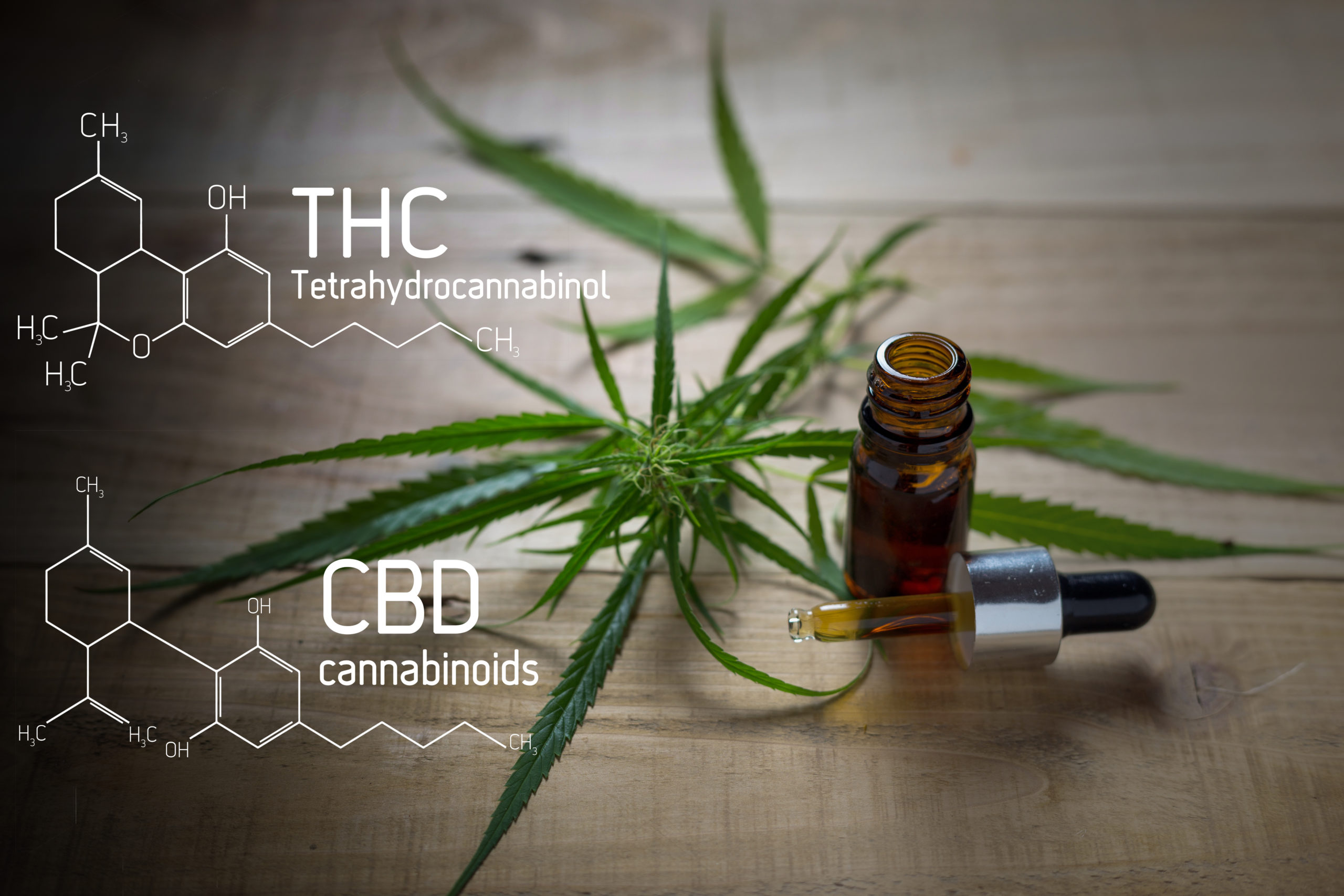Tetrahydrocannabinol, or THC, is not only a mouthful to say, it is a chemical in marijuana that is used to treat various medical ailments. This is because THC mimics the natural cannabinoid chemicals found in your body. Let’s break down how that works.
We need cannabinoids to complete our basic human functions. They can be produced both synthetically (like ingesting THC or CBD) and naturally, in the body. Natural cannabinoids made by the body are known as endocannabinoids.
Your body also has many different cannabinoid receptors. They’re in the nervous, respiratory, circulatory and digestive systems, and cartilage. The endocannabinoid system is responsible for maintaining your body’s equilibrium by helping balance symptoms of physical pain, mental stress, and regulating your body’s natural functions, such as digestion and memory.
THC, like its name suggests, is a cannabinoid. It has the ability to attach to your body’s different cannabinoid receptors and help relieve your pain, stress, depression, etc. In fact, THC is proven to help with all of the following:
THC’s Psychoactive Effects
Interfering with neural communication can have side effects.
It is also the part of the marijuana plant that is responsible for producing psychological effects — it is what makes the user high. According to the National Institute on Drug Abuse (NIDA), THC’s chemical structure is similar to a natural chemical in your brain called anandamide. They affect brain areas that influence pleasure, memory, thinking, concentration, movement, coordination, and sensory and time perception. THC attaches to the anandamide cannabinoid receptors, which disrupts your body’s regular functions, thus causing the psychoactive effects.
THC also interferes with how your brain forms new memories. In fact, impaired memory is one of THC’s main side effects, as well as hallucinations.
For comparison, CBD does not produce this effect, despite being a part of the same plant.
Medical History of THC
According to the National Cancer Institute, medical marijuana has been used for more than 3,000 years.
The Food and Drug Administration has synthesized a drug using THC called dronabinol. Dronabinol is used to treat or prevent the nausea and vomiting associated with cancer medicines.
Is THC Legal?
THC and CBD, which are the two main medical components of the plant, are both widely used. However, CBD is legal, but THC is not. Marijuana and THC are on the list of controlled substances, so they’re prohibited under federal law.
States are allowed to set their own laws regarding THC and medical marijuana use. Marijuana is legal in 11 states for adults over the age of 21, and legal for medical use in 33 states. For a full breakdown of where marijuana is legal, please see this map.
Are THC and Medical Marijuana the Same?
THC is not medical marijuana. There is a difference between cannabis and cannabinoids. Cannabis is marijuana while cannabinoids are the active chemicals that are derived from cannabis. Tetrahydrocannabinol (THC) and CBD are cannabinoids. They are used to lower inflammation and relieve pain.
Marijuana is the dried leaves, flowers, stems and seeds of the hemp plant. Extracts, oils and distillates can be derived from the plant. The term “medical marijuana” means using the unprocessed plant or its extracts to treat symptoms and health conditions.
Medical marijuana can be ingested in a few ways, though the most common are through inhalants, such as smoking or vaping, or edibles.
To compare, THC can be used in syrups, edibles, oils used via tinctures, drops, in medicines, lotions, and balms used for anti-inflammation.
Vaping THC
If you prefer to ingest THC through vaping, you have a few options.
You can choose from the following:
- High THC, low CBD (10-30% THC, trace amounts of CBD)
- Balanced CBD/THC (5-15% THC and CBD)
- High CBD, low THC (5-20% CBD, THC under 5%)
- Pure CBD (between 0-0.3% THC)
According to Leafly, high-CBD strains can deliver clear-headed functional effects without any high.
A more balanced strain will produce a small amount of euphoric highs, though they are still much less likely to produce side effects. These are the most effective at treating pain and providing a mellow buzz.
High THC strains provide the strongest high with the best chance of producing negative side effects. Effective in treating chronic conditions, many choose these strains to treat more severe pain, such Crohn’s disease.
If you’re looking for a premium vaping experience, check out DC Alchemy’s store. Their CCELL products have next-gen technology that reduces leaks, increases the smoothness of draws, and provides you with a vaping experience unlike any other. If you’re looking for wholesale orders, DC Alchemy can fill those too for an affordable price. Give them a call today.
